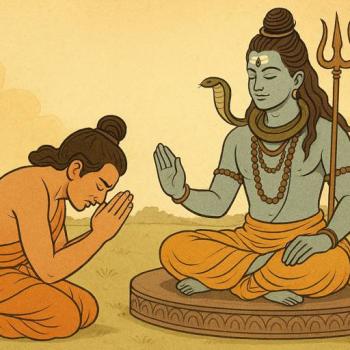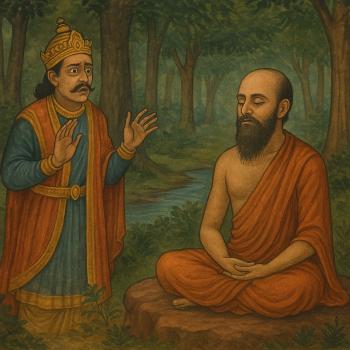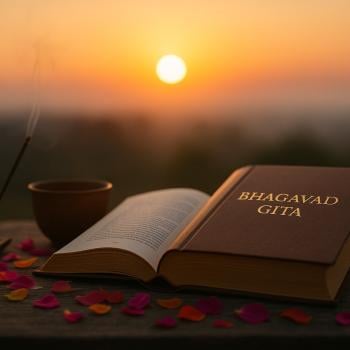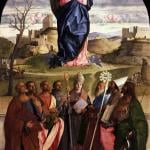
It begins quietly.
Not with fanfare or thunder, but with an invisible stirring—like wind moving through unseen realms. Karma, in Hindu philosophy, is often misunderstood today. It’s reduced to a meme, a punchline: “Karma will get them.” But in truth, Karma is not about revenge or even reward. Karma is about participation in the unfolding dance of life.
It is the silent force by which the entire cosmos breathes, evolves, and moves with purpose. For me, Karma is not only philosophy—it is personal, rooted in my lived experience, and shaped by the Bhagavad Gita’s timeless wisdom.
Karma as the Divine Force of Creation
“Salutations to that Karma (Action), due to the power of which, just like a potter, Brahma remains engrossed in creating the world.”
What a profound image: Brahma, the creator deity, not commanding creation from a distance, but working like a humble potter, spinning the wheel of life with his hands. That wheel is Karma—the ever-turning cycle of action, intention, and consequence.
This is not creation for ego or ownership. It is creation as offering, creation as Dharma. When we act in the same spirit—engaged, focused, detached—we mirror that divinity.
Rebirth and the Sage’s Return
“Salutations to that Karma which makes Maharishis incarnate again and again, and forces them to endure results.”
Even Maharishis—great seers who have transcended ego—are drawn back into the world by the thread of Karma. But unlike the average soul, they return not to fulfill desires, but to serve. Their return is not bondage, but compassion.
It reminded me that Karma doesn’t always look “fair” from a limited view. Suffering may visit even the wise, not as punishment, but as part of a cosmic realignment—a subtle purification and an opportunity to elevate others.
The Ascetic God and the Skull Bowl
Among the most haunting yet beautiful symbols in Hindu lore is that of Rudra (Shiva), holding a skull bowl as he begs for alms.
“Salutation to that Karma which makes Rudra beg for alms with a skull as his begging bowl.”
Here is the great yogi, the renunciate, the destroyer of ego, shown in complete surrender. Even he bows to the law of Karma—not as subjugation, but as acknowledgment that no one is above Dharma. The skull bowl is not shame—it is a vessel of wisdom, a symbol of emptiness, humility, and detachment.
Bhagavad Gita’s Wisdom on Karma
The Gita offers its most liberating truth when it tells us that suffering arises not from action, but from attachment to its outcome. The ego wants to be the victor, the hero, the doer. But this very ego becomes the cause of our pain.
“When we give up the arrogance of being the doer, we are spared the suffering of being the bearer of results.”
Krishna’s words to Arjuna echo across time:
कर्मण्येवाधिकारस्ते मा फलेषु कदाचन।
मा कर्मफलहेतुर्भूर्मा ते सङ्गोऽस्त्वकर्मणि॥
Karmaṇy-evādhikāras te mā phaleṣhu kadāchana
mā karma-phala-hetur bhūr mā te saṅgo ‘stvakarmaṇi
(Bhagavad Gita 2.47)
“You have the right to perform your duty, but not to the fruits thereof. Do not let the fruits of action be your motive, nor let your attachment be to inaction.”
This shloka became my personal mantra during a painful chapter in my life. It helped me shift from despair to action, from complaint to contribution.
Even the Sun Revolves by Karma
“Salutation to that Karma which forces the sun to revolve continuously.”
What a beautiful reminder: even the sun, the eternal source of light, revolves in obedience to the law of Karma. It doesn’t pause to ask if its rays are appreciated. It simply shines.
We too can learn from the sun. We act, we serve, we shine—not for reward, but because it is our nature to give.
Vedangas: Limbs of Vedic Wisdom
To understand Karma, the Vedas, and Dharma, one must also embrace the Vedangas—the six “limbs” that support the Vedas, much like Karma supports the rhythm of life:
-
Chandas (Prosody) – the feet that measure the rhythm of sacred sound
-
Kalpa (Rituals) – the arms that carry out sacred action
-
Jyotisha (Astrology) – the eyes that see cosmic patterns
-
Nirukta (Etymology) – the ears that understand language
-
Shiksha (Phonetics) – the nose that refines pronunciation and sound
-
Vyakarana (Grammar) – the mouth that articulates divine order
By studying the Vedas along with the Vedangas, one begins to tune into the subtle vibrations of Karma, Dharma, and cosmic order.
Closing Reflection: Karma as Grace
Karma is not a jailer. It is a teacher.
It is not punishment. It is precision.
It is not fate. It is freedom through awareness.
As I reflect on the moments that shattered me—and those that saved me—I no longer ask, “Why me?”
Instead, I ask, “What is this teaching me?”
Karma, I’ve come to see, is not separate from grace. It is grace in motion.
Let us bow not only to the gods, but to the law that even gods follow.
Let us act with integrity, with devotion, and with surrender.
Because when we act from love and let go of the result, we don’t just live—we liberate.













